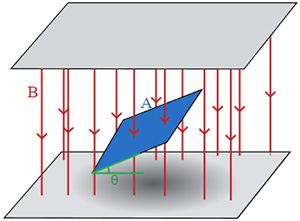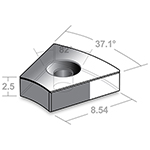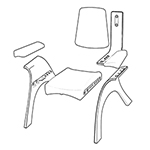
In our daily lives, we often fail to acknowledge the profound influence of magnetism and how it shapes the world around us. From powering our electronic devices to guiding compass needles, magnetic flux is an invisible force that actively shapes our modern world. In this blog post, we will delve into the captivating world of magnetic flux, exploring its applications, significance, and the underlying principles that govern its behavior.
Understanding Magnetic Flux:
Magnetic flux represents the measurement of the total magnetic field passing through a given surface. It stands as a crucial concept in the study of electromagnetism, providing insight into the intricate relationship between magnetism and electricity. To comprehend this phenomenon, envision invisible lines of magnetic force flowing through space, forming closed loops around magnets or electric currents.
The Role of Magnetic Flux in Electromagnetic Induction:
One of the most notable aspects of magnetic flux lies in its connection to electromagnetic induction, a fundamental principle forming various technologies’ basis. When a coil of wire experiences a change in the magnetic flux passing through it, it actively induces an electromotive force (EMF) or voltage across the coil. This concept lies at the core of electric generators, transformers, and numerous electrical devices that power our homes, industries, and cities.
Applications in Power Generation:
The principles of magnetic flux play a pivotal role in electricity generation. Large generators within power plants actively convert mechanical energy into electrical energy. These generators utilize a rotating magnet or a set of coils to induce a current in the surrounding coils, thereby creating a flow of electrons. This process of electromagnetic induction empowers us to harness the energy of moving parts and generate the electricity that powers our homes and industries.
Magnetic Flux in Electronics:
The influence of magnetic flux extends far into the realm of electronics. Magnetic storage devices, such as hard drives and magnetic tapes, ingeniously employ the concept of magnetic flux to store and retrieve information. By magnetizing tiny particles on these surfaces in different directions, representing binary information (0s and 1s), data can be written and read through manipulation of the magnetic flux passing through these particles. This technological marvel enables us to access and utilize vast amounts of digital information.
Magnetic Flux in Navigational Systems:
For centuries, magnetic flux has played a pivotal role in navigation. The Earth itself behaves as a giant magnet, aligning its magnetic field roughly along the North-South axis. This fascinating phenomenon enables compasses to actively align themselves with the Earth’s magnetic field, facilitating navigation over vast distances. Navigational systems, including GPS, rely on measurements of magnetic fields to provide precise positioning information.
Cutting-Edge Applications:
Beyond its traditional applications, magnetic flux is at the forefront of cutting-edge technologies. Magnetic levitation (maglev) trains, for instance, employ magnetic fields to actively suspend and propel trains above tracks, eliminating friction and enabling faster smoother transportation. In the field of medical imaging, magnetic resonance imaging (MRI) exploits powerful magnetic fields and precise measurement of magnetic flux to produce detailed images of the human body, aiding in accurate diagnosis and treatment.
The invisible force of magnetic flux permeates every aspect of our lives, from the power grids that supply our energy to the tiny magnets within our smartphones. Understanding the principles and applications of magnetic flux allows us to appreciate the intricate interplay between magnetism and electricity, recognizing their pivotal role in shaping our modern world. As we continue to advance technologically, magnetic flux will undoubtedly continue to exert its influence and revolutionize various domains, making significant contributions to the ongoing evolution of our society.







